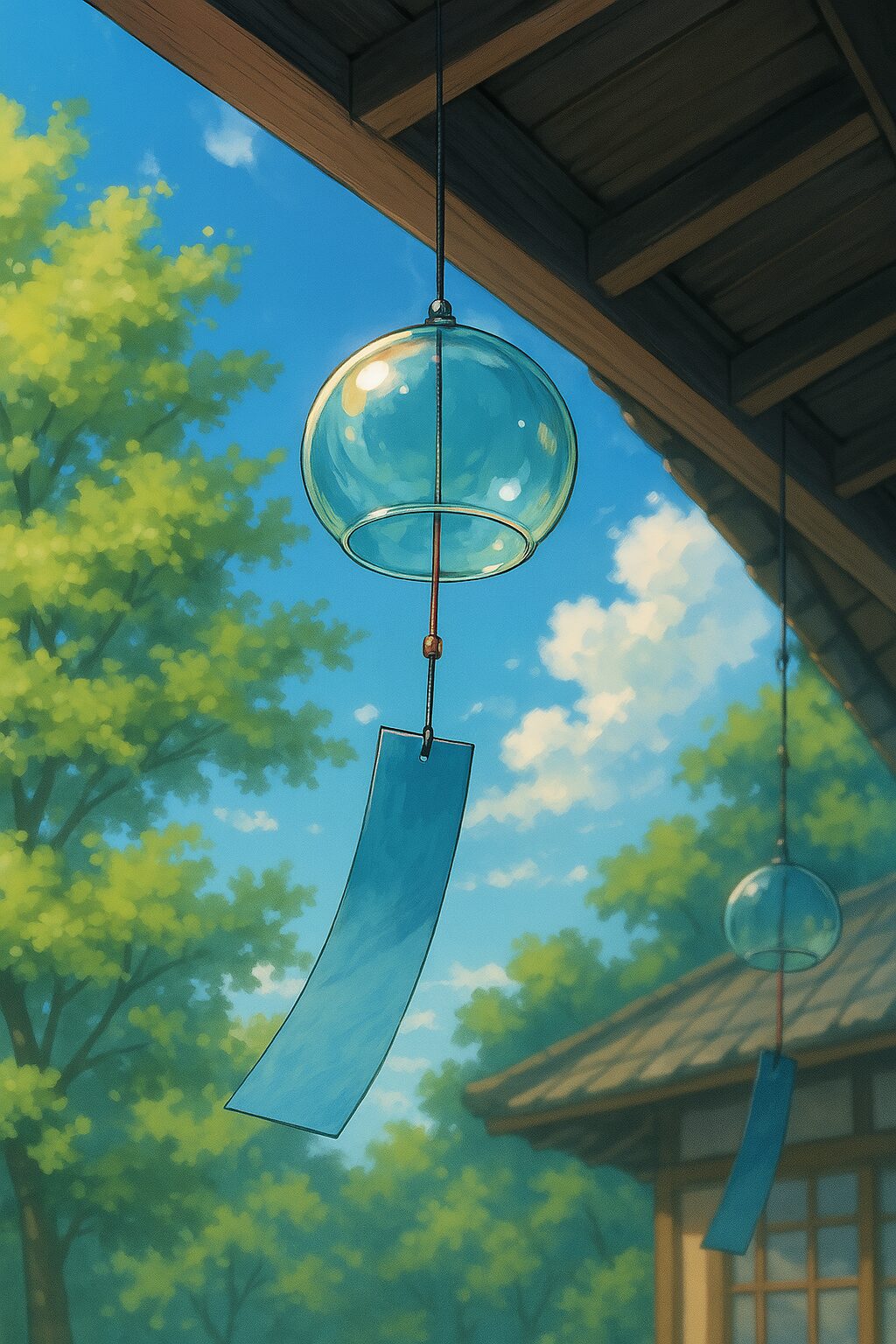- Introduction: How a Small Bell Captivates the World
- 🧠The Science of Sound: Why Wind Chimes Calm the Mind
- 🏯Historic Origins: From Spiritual Amulets to Everyday Elegance
- 🎐Harmony with Architecture: The Spatial Art of Cooling Sound
- 🌍Global Appeal: How Wind Chimes Resonate Across Borders
- 🛍Furin Markets Today: From Folk Craft to Urban Sensibility
- ✨Conclusion: The Philosophy Embedded in a Single Sound
Introduction: How a Small Bell Captivates the World
When summer sweeps across Japan, one gentle sound carries its essence: the crisp chime of a furin, or Japanese wind chime. Hanging from eaves and balconies, this modest object may seem simple, but it embodies centuries of emotional resonance, architectural harmony, and cultural sophistication.
For those unfamiliar with Japanese traditions, the furin offers an entry point into the country’s intricate relationship with sound, space, and seasonal awareness. Let’s explore its roots, psychological effects, and modern presence to better understand why this tiny bell continues to enchant hearts around the world.
🧠The Science of Sound: Why Wind Chimes Calm the Mind
Japanese wind chimes produce high-frequency tones that activate alpha waves in the brain—waves associated with calm, meditation, and emotional release.
- According to research at Kyoto University, sound waves above 5 kHz may improve mental focus while reducing stress.
- Elderly care centers in Japan often use furin sounds as background ambiance during summer to promote emotional well-being and lessen anxiety.
Example At a nursing home in Kanagawa Prefecture, dozens of glass furin hang in the courtyard. The soothing melody reduces restlessness in residents and enhances social interaction.
🏯Historic Origins: From Spiritual Amulets to Everyday Elegance
Furin are believed to originate from senfūtaku (占風鐸), bronze bells used in ancient China to ward off evil spirits. Introduced to Japan around the Nara period, their function gradually evolved.
- In the Edo era (1603–1868), furin became popular among merchants and townspeople, particularly in Tokyo’s Asakusa and Nihonbashi districts.
- Glass-blown furin from artisans in Edo (modern-day Tokyo) were considered luxuries—custom pieces hung at entrances to express personal taste and seasonal awareness.
Example Records from merchant houses in Kawagoe mention female attendants noting the changing seasons through the pitch and resonance of furin sounds—a sensory diary written in tone.
🎐Harmony with Architecture: The Spatial Art of Cooling Sound
Traditional Japanese homes were built to encourage airflow through engawa (verandas) and open eaves—perfect places for furin to catch the breeze.
- The combination of wood, wind, and subtle chime created a multisensory form of seasonal “cooling.”
- In Kyoto tea houses, hanging a furin before a summer gathering is a symbolic act of purification, inviting clarity and focus.
Example At Taihō-an in Uji, a summer event called “Furin Tea Ceremony” celebrates mindfulness. The sound of furin blends with the silence of tea preparation, creating a space of meditative refreshment.
🌍Global Appeal: How Wind Chimes Resonate Across Borders
While other cultures have wind chimes, few treat them as emotional or seasonal markers. In the West, “wind chimes” are usually decorative, linked to aesthetics rather than climate or psychology.
- In Japan, furin are tied directly to seasonal emotion—they signal the arrival of summer, and in many cases, evoke nostalgia, hope, and tranquility.
- Meditation centers abroad have begun incorporating Japanese furin for sound therapy and mindfulness retreats.
Example At the 2023 Japan Summer Sound Festival in New York, meditation sessions featured Japanese wind chimes. One participant remarked, “Just listening transported me to a quiet summer afternoon in Kyoto.”
🛍Furin Markets Today: From Folk Craft to Urban Sensibility
Modern furin are crafted in glass, ceramic, tin, and even wood—each producing a unique sound profile. Local markets, known as “Furin-ichi,” celebrate this diversity.
- The Kawasaki Daishi Wind Chime Festival gathers over 30,000 furin annually, some from centuries-old workshops.
- Some booths feature experiential combinations like sake tasting with furin listening, blending sensory traditions to create cross-cultural appeal.
Example Visitors at a Tokyo pop-up stall tried pairing regional wind chimes with sake from the same area. The tone of the furin influenced the perception of flavor—an unexpected marriage of sound and taste.
✨Conclusion: The Philosophy Embedded in a Single Sound
Japanese wind chimes represent far more than summer nostalgia. They’re cultural instruments attuned to nature’s rhythm, spaces built for reflection, and sounds that spark subtle emotional transformation.
To hear a furin is to enter a moment of awareness—of time passing gently, air moving quietly, and life continuing rhythmically. For global audiences, discovering the sound of a furin is discovering Japan’s poetic language of feeling.



コメント